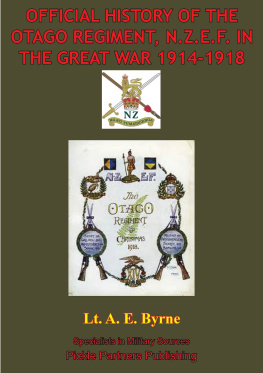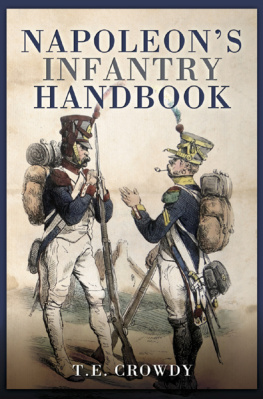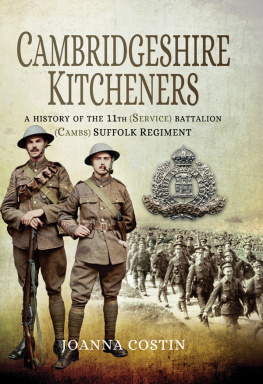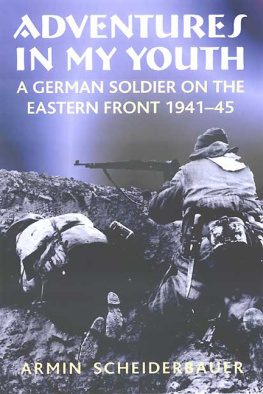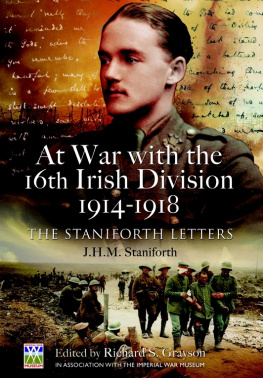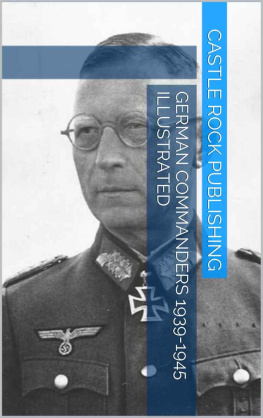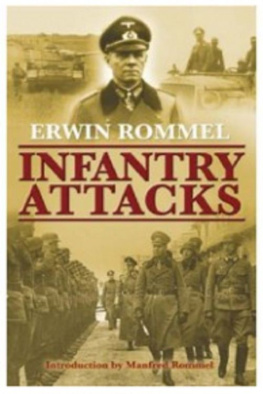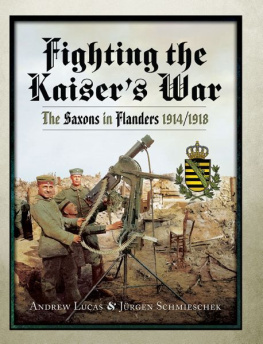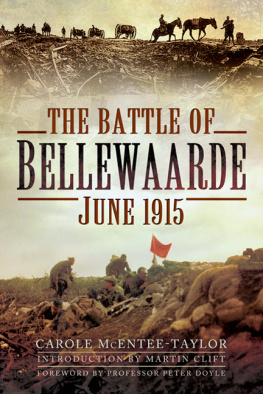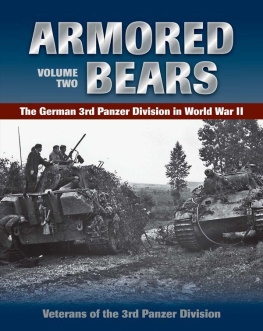First published in Great Britain in 2015 by
PEN & SWORD MILITARY
an imprint of
Pen & Sword Books Ltd
47 Church Street
Barnsley
South Yorkshire
S70 2AS
Copyright Andrew Lucas and Jrgen Schmieschek 2015
ISBN: 9781783463008
EPUB ISBN: 9781473847781
PRC ISBN: 9781473847897
The right of Andrew Lucas and Jrgen Schmieschek to be identified as Authors of this Work has been asserted by them
in accordance with the Copyright, Designs and Patents Act 1988.
A CIP catalogue record for this book is available from the British Library
All rights reserved. No part of this book may be reproduced or transmitted in any form or by any means, electronic or
mechanical including photocopying, recording or by any information storage and retrieval system, without permission
from the Publisher in writing.
Layout: Jrgen Schmieschek
Typeset in AGaramond
Printed and bound by CPI UK
Pen & Sword Books Ltd incorporates the imprints of Pen & Sword Archaeology, Atlas, Aviation, Battleground, Discovery,
Family History, History, Maritime, Military, Naval, Politics, Railways, Select, Social History, Transport, True Crime, and
Claymore Press, Frontline Books, Leo Cooper, Praetorian Press, Remember When, Seaforth Publishing and Wharncliffe.
For a complete list of Pen & Sword titles please contact
PEN & SWORD BOOKS LIMITED
47 Church Street, Barnsley, South Yorkshire, S70 2AS, England
E-mail:
Website: www.pen-and-sword.co.uk
CONTENTS
PREFACE
Our subject would have been instantly recognisable to the generation who fought in the Great War. Saxony was prominent in the old Anglo-German culture before 1914, and once as familiar to the more cosmopolitan Englishman as Bavaria or the Rhineland. British soldiers memoirs, contemporary newspapers and early unit histories often refer to the Saxons, and few accounts of the Christmas Truce (even from Prussian-held sectors) fail to mention them. Under the Soviet occupation after the Second World War Saxony sadly became terra incognita to the English-speaking world. We hope this book will go some way toward rectifying this situation.
This book focuses on primary sources, most of which have never seen print in any language. We aim to give enough background on units and sectors to put the photos and accounts into context, and to provide starting points for further research on the British or German side. Despite limiting our scope to Flanders we unearthed far more relevant material than we could include in a book of this size, and aim to make more available on our website www.royalsaxonarmy.co.uk.
We are profoundly indebted to all those who lovingly preserved these historical documents over the past century. We owe a still greater debt to the countless Saxon servicemen (many sadly anonymous) who chose to record their experiences, and to the lax censorship regime which allowed them to do so. We hope we have been fair and respectful to the memory and common humanity of all individuals and units (of all nations) who appear in this book.
For the avoidance of ambiguity, ease of reference with German sources and historical flavour we have used German time throughout and retained much terminology (especially the names of units) in the original German; please refer to the glossary on . The use of reference works on the German military and the campaigns in Flanders is highly recommended. Except within quotations place names in Belgian Flanders are given in their modern Flemish forms with the exception of those such as Ypres which are far better known in another form. Major variants are noted in the index of places (pp. 252253), which acts as key to both the text and the maps. We hope our book will be a useful companion to any of the numerous guidebooks to the relevant areas, and that readers will spare a thought for the individuals and units we describe when they visit the places where they lived and died.
Providentiae Memor!
Andrew Lucas and Jrgen Schmieschek
October 2014
ACKNOWLEDGEMENTS
This book would not have existed without the enthusiastic support of Jon Cooksey at Stand To! We also owe a deep debt of gratitude to Rupert Harding at Pen and Sword, for unflagging support during its long and difficult gestation. We are very grateful to Frank Peter Groe for material on IR 354, and to Jan Vancoillie both for some fine images and for his invaluable knowledge of Flanders. We also wish to thank the staff of The National Archives and Imperial War Museum in London, and of the Schsisches Hauptstaatsarchiv in Dresden for help during our visits.
Andrew would also like to thank the following:
My greatest debt is to my great-grandfather Arno Bierast. Though I never met this brave and principled man, his wartime photos inspired my work. I am deeply grateful to my grandmother Margot Hemmings (ne Bierast) for her affectionate support and for taking me to see Berlin and Dresden. I am profoundly indebted to my parents Michael and Ann Lucas for their love and patient assistance. Without experience gained on my fathers book The Journeys End Battalion or his help with British sources I could not have attempted such a huge project. I wish to thank my long-suffering housemates, most of all Diana Zachau for single-handedly finding us a new home during the writing process. Hearty thanks are due to both her and our good friend Hauptfeldwebel a. D. der Luftwaffe Simon Groeger for help with translations. I am fondly grateful to Cleo (RIP), Bunny, Peggy and the Herr Feldwedel for their soothing presence. I also wish to thank my supportive employers Creative Virtual. Special thanks are due to Jack Sheldon for aid and encouragement early in my research. Without his pioneering work this book would have been immeasurably harder to write. I am also grateful to Jean Polak for early assistance. Finally I must express my heartfelt gratitude to my co-author, who answered all my nave and clumsy early queries with schsische Hflichkeit and became my staunchest comrade and friend in Great War research.
Jrgen would also like to thank the following:
I am grateful to my family and especially my dear Ute, who patiently accepted that I could spend much less time with them than we would have liked during many phases of the creation of the book. I would also like to warmly thank my co-author Andrew for taking the trouble, on top of all his timeconsuming research, to make working through all the language problems as easy and pleasant as possible for me. I am very happy that our long-standing friendship has been greatly deepened by our harmonious work together on this book.

Surviving personal documents from a century ago offer interesting glimpses of the system that produced them and of life under it. This Verkehrsschein (travel permit) for Ren Deruyter of Lambresart was authorised in 1915 by 24. Feldartillerie-Brigade/24. Infanterie-Division as Ortskommandantur of that town, and clearly saw heavy use. Note that contemporary identity documents carried by German soldiers did not include a photo.
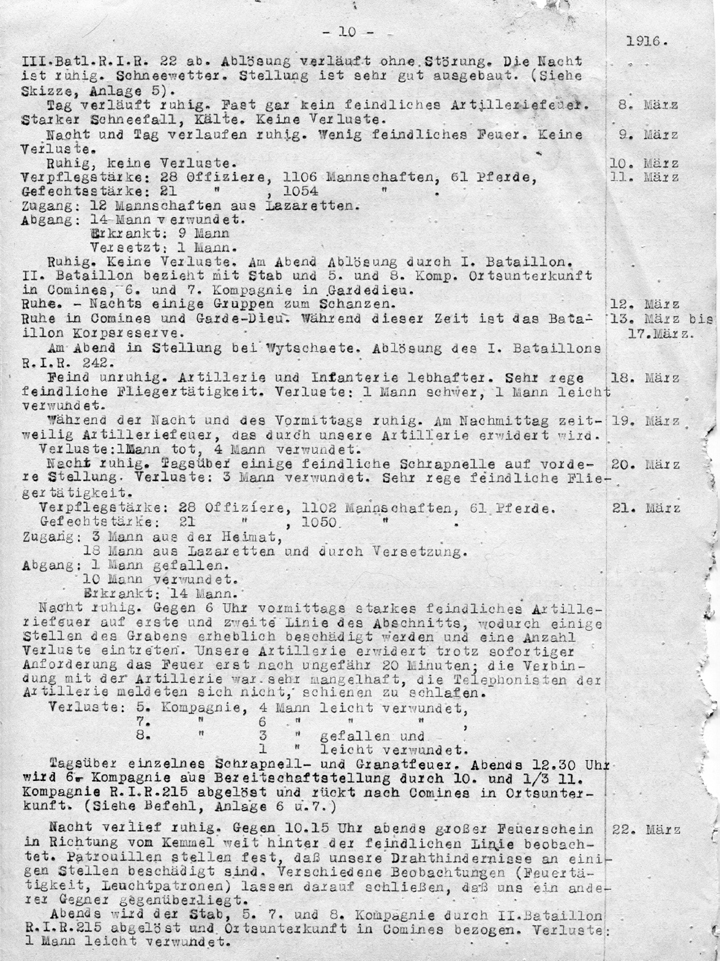
Original typescript page from the war diary of Reserve-Infanterie-Regiment 242 for March 1916, when the regiment was near Wytschaete.
CHAPTER 1
INTRODUCTION

The old and new faces of the Royal Saxon Army: a young infantryman in wartime
Next page

